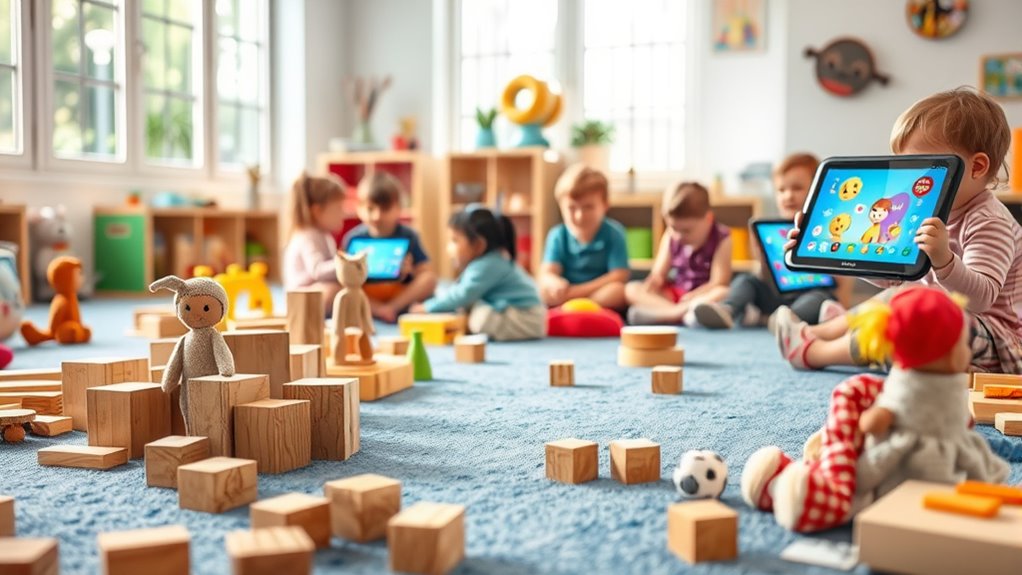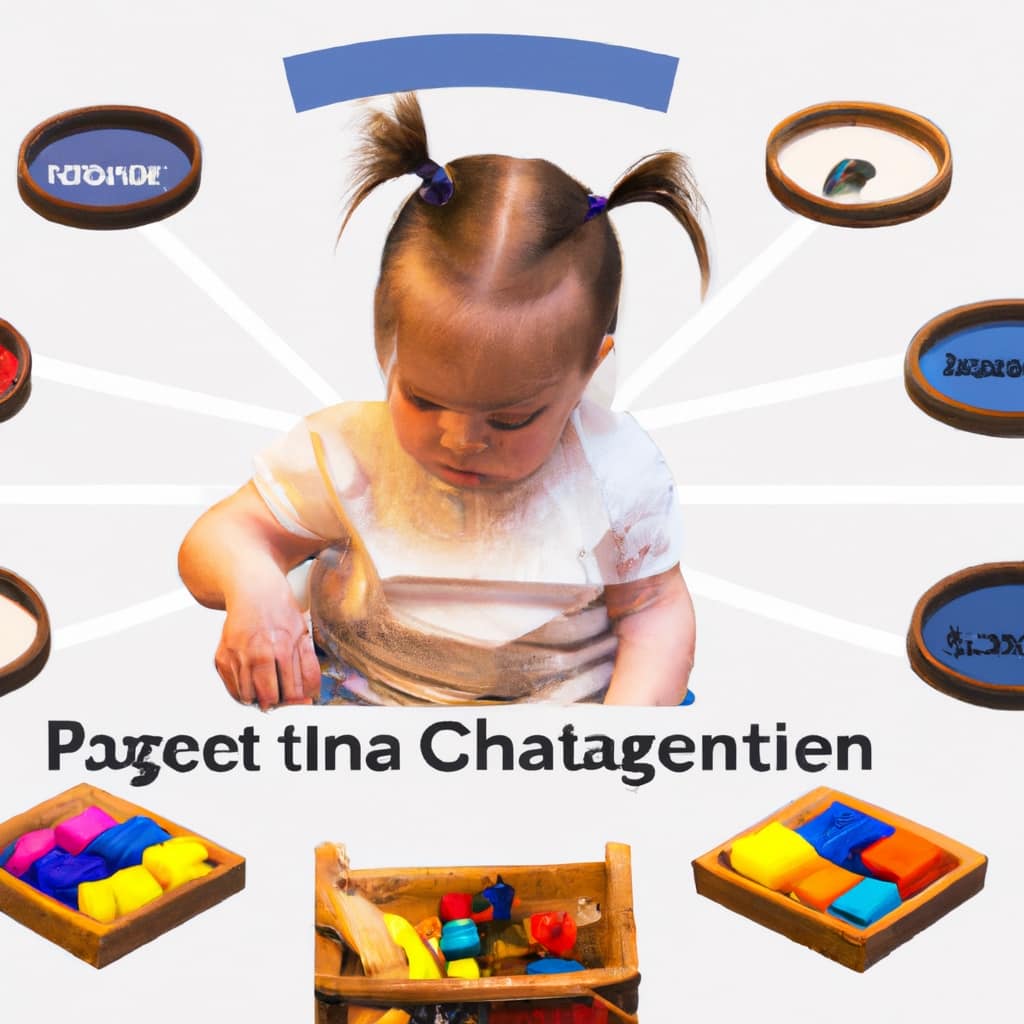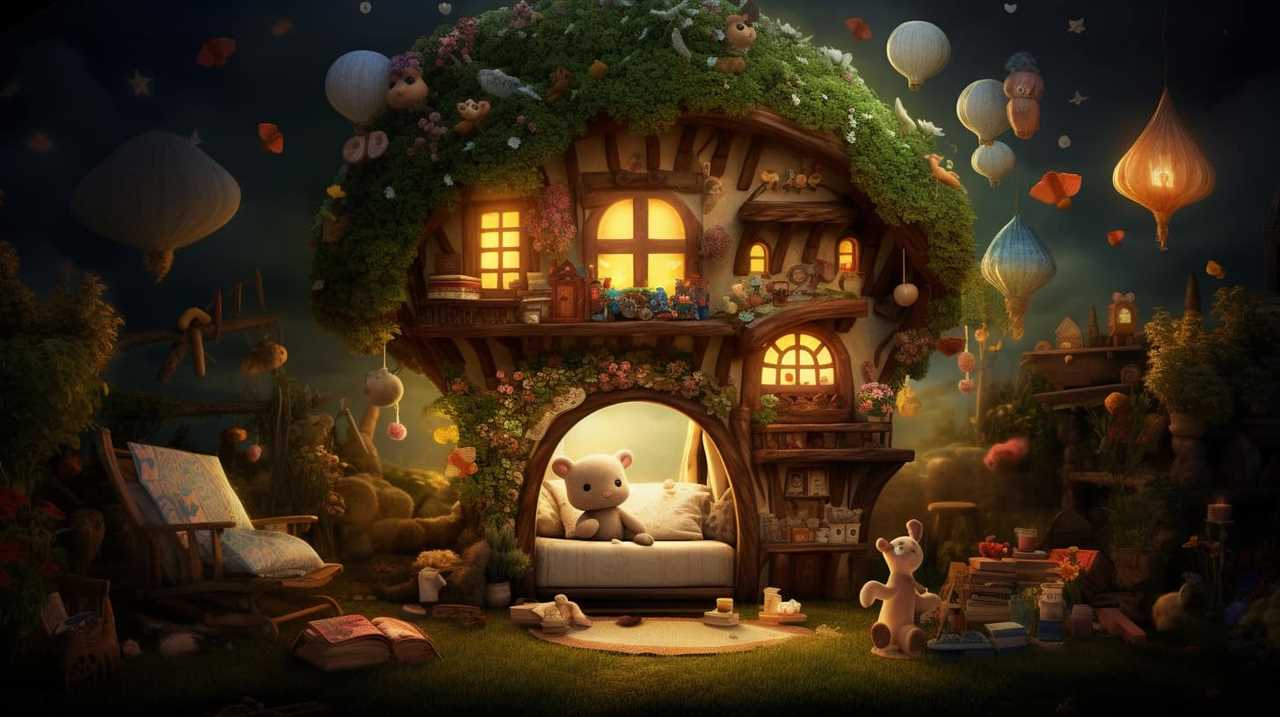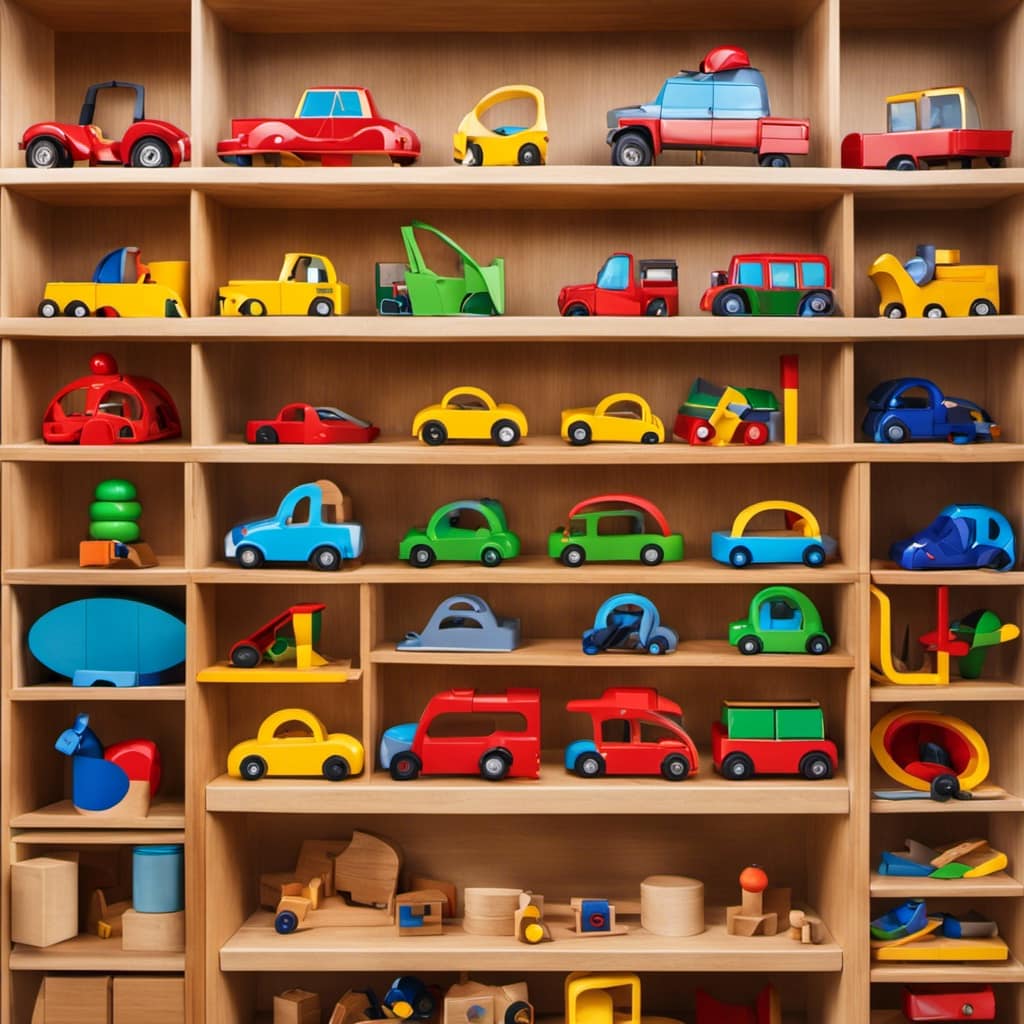Open-ended toys encourage your preschooler’s creativity, imagination, and problem-solving, allowing them to explore and invent scenarios without set limits. Electronic toys focus on teaching specific skills like numbers, letters, or music through interactive features, but these can limit spontaneous play. Both types have benefits, so blending them can support your child’s overall development. Keep exploring to discover how finding the right mix can boost your child’s growth and fun.
Key Takeaways
- Open-ended toys promote creativity, problem-solving, and imaginative play, while electronic toys focus on specific skills like numbers or music.
- Both toy types offer developmental benefits; combining them fosters a balanced, holistic growth experience.
- Open-ended toys support cognitive and emotional development through flexible, inventive play; electronic toys enhance targeted learning.
- Electronic toys often involve predefined sequences, limiting creative reinterpretation, whereas open-ended toys encourage flexible thinking.
- Prioritizing a mix of both types ensures children develop creativity, critical thinking, and targeted skills for well-rounded growth.
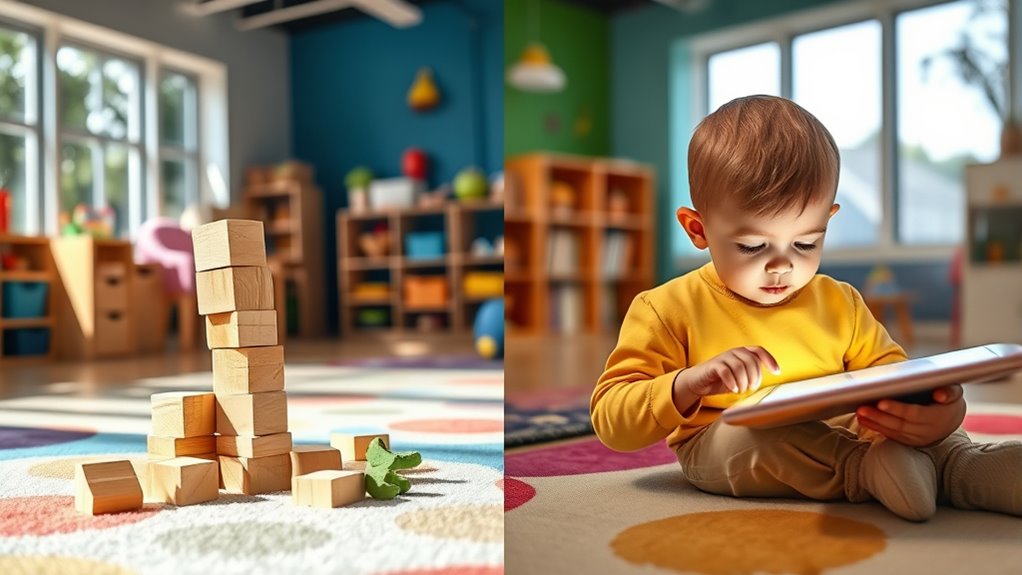
When choosing toys for children, understanding the differences between open-ended and electronic toys can help you make better decisions. Open-ended toys encourage creative play, allowing children to use their imagination and explore different ways to engage with the toy. Unlike electronic toys, which often come with specific functions or preset activities, open-ended toys don’t have a set purpose. This flexibility means your child can transform a simple block into a building, a vehicle, or even a piece of art. By promoting creative play, these toys help children develop essential skills like problem-solving, critical thinking, and spatial awareness. These benefits extend beyond mere entertainment; they lay a foundation for cognitive and emotional growth. When kids invent stories or design new structures with open-ended toys, they’re exercising their creativity and learning to think independently. This active engagement fosters a sense of confidence and curiosity, which are crucial for their overall development. Additionally, research shows that open-ended play supports long-term cognitive development by encouraging flexible thinking and innovation.
On the other hand, electronic toys often focus on specific educational goals, such as teaching numbers, letters, or music. While these toys can be engaging and may introduce children to new concepts, they tend to limit a child’s ability to manipulate or reinterpret the toy’s purpose. Electronic toys usually involve pressing buttons or following predefined sequences, which can sometimes restrict creative expression. Although they can support developmental benefits like fine motor skills or early literacy, they might not offer the same opportunities for imaginative play as open-ended toys do. If your goal is to nurture a child’s ability to think outside the box, open-ended toys are usually more effective because they allow your child to invent their own stories and scenarios. This kind of play helps children become more adaptable and resourceful, qualities that are useful in many areas of life.
Ultimately, both types of toys have their place, but balancing them can give your preschooler the best of both worlds. Open-ended toys foster creative play and provide rich developmental benefits, helping your child grow into a confident, innovative thinker. Electronic toys, meanwhile, can complement this by introducing specific skills and knowledge. When you’re shopping, consider what kind of play experience you want to encourage. Opt for open-ended options that stimulate imagination and problem-solving, but don’t shy away from electronic toys that can introduce new concepts in a fun, engaging way. By choosing a thoughtful mix, you support your child’s holistic development—encouraging both creative exploration and targeted learning.
Frequently Asked Questions
How Do Open-Ended Toys Support Creativity Better Than Electronic Toys?
Open-ended toys encourage your child to engage in imaginative play, allowing them to create stories and scenarios that fuel their creativity. They also promote problem-solving skills, as kids figure out how to use the toys in different ways. Unlike electronic toys, open-ended options don’t limit your child’s imagination or interactions, giving them the freedom to explore and develop their ideas, which supports overall cognitive growth and creative thinking.
Are Electronic Toys More Educational Than Open-Ended Toys?
Imagine a robot teacher giving a lecture—sounds impressive, right? Electronic toys often boast higher educational benefits and can boost play engagement with interactive features. But don’t be fooled; they may entertain, but they often limit imagination. Open-ended toys foster creativity and problem-solving better, making your child’s learning more meaningful. So, while electronic toys seem more educational at first glance, true engagement and development come from open-ended play.
What Safety Concerns Exist With Electronic Toys for Preschoolers?
When considering safety concerns with electronic toys, you should watch for potential battery hazards, like choking risks from removable batteries or leaks. Additionally, screen time concerns come into play, as excessive exposure can impact your child’s development. Always supervise your preschooler during play, ensure the toy’s batteries are secure, and set limits on screen duration to promote healthy habits and reduce safety risks.
How Do Open-Ended Toys Influence Social Skills Development?
You notice that open-ended toys boost social interaction by encouraging kids to share, negotiate, and collaborate. These toys help develop emotional intelligence as children navigate their feelings and understand others’ emotions during play. By fostering creativity and communication, open-ended toys support your preschooler’s social skills, making interactions richer and more meaningful. This active engagement lays a strong foundation for healthy relationships and emotional awareness as they grow.
Can Electronic Toys Replace Traditional Open-Ended Play Experiences?
Imagine a child reaching for a toy that sparks creativity, like a painter’s palette, rather than just a screen. Electronic toys can’t fully replace traditional open-ended play, especially since they often involve screen time and battery safety concerns. While they offer engaging features, they lack the nuanced social interaction and imagination fostered by open-ended toys. Balance is key—use electronic toys thoughtfully alongside traditional play for ideal growth.
Conclusion
So, when choosing toys for your preschooler, remember—open-ended toys ignite imagination like a fireworks show, turning tiny hands into master creators. Electronic toys, while fun, can’t match the endless adventures sparked by simple blocks and art supplies. If you want your kid’s creativity to explode into a universe of possibilities, go for open-ended toys. Trust me, your child’s imagination will thank you—it’s like giving them a magic wand for their dreams!

